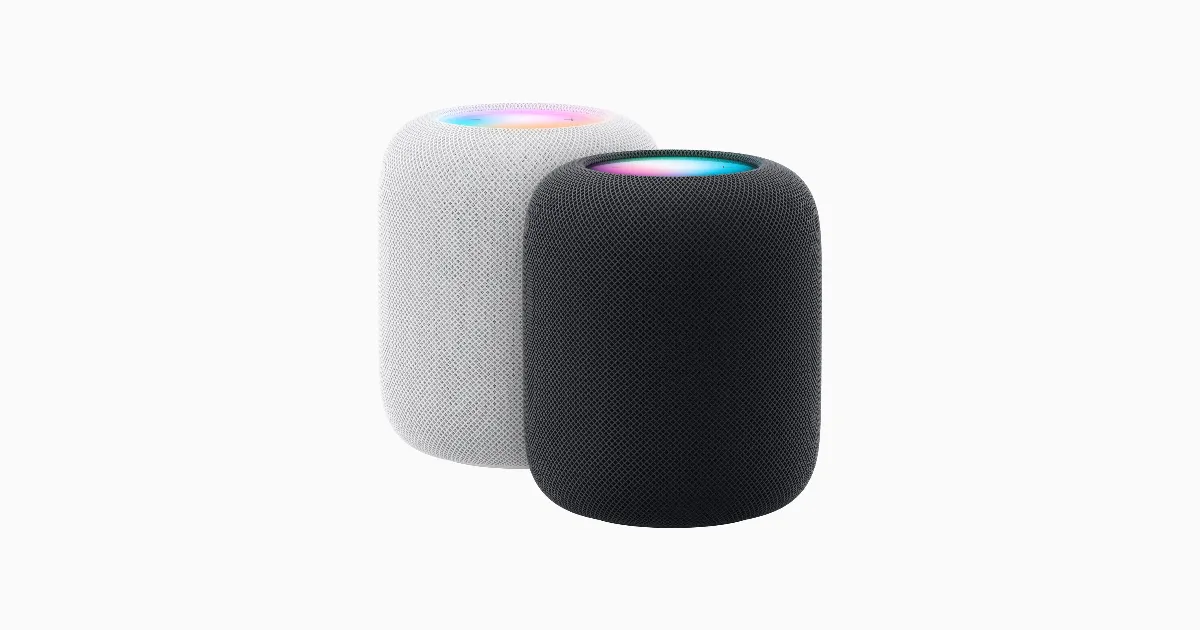In a move that could redefine the smart home audio experience, Apple is reportedly working on the next generation of its HomePod, and it’s expected to come with a significant upgrade—an LCD screen. This development could mark a significant shift in the smart speaker market and offer users an even more immersive and versatile experience.
Key Highlights:
- Apple’s next-gen HomePod will reportedly feature an LCD screen, providing enhanced visual feedback and interaction options.
- The addition of a screen is expected to expand the HomePod’s capabilities, allowing it to function as a smart display in addition to a high-quality speaker.
- This move aligns with Apple’s ongoing efforts to integrate its ecosystem seamlessly and make the HomePod a central hub for smart home control and entertainment.
- Industry experts anticipate that this new feature could give Apple a competitive edge in the smart speaker market, currently dominated by Amazon and Google.

As technology enthusiasts eagerly await the official announcement from Apple, several rumors and leaks have surfaced, shedding light on the potential features and implications of the next-gen HomePod. While Apple has not officially confirmed these reports, the speculation surrounding the inclusion of an LCD screen is generating considerable excitement.
The addition of an LCD screen to the HomePod could revolutionize the way users interact with their smart speakers. While the current generation of HomePod relies on voice commands and audio feedback, the presence of a screen would enable visual feedback and enhance the user experience in several ways:
Visual Feedback
Users will be able to see information displayed on the screen, such as song lyrics, weather forecasts, calendar events, and even video content. This visual feedback could make interactions with the HomePod more intuitive and informative.
Smart Display Capabilities
With an LCD screen, the HomePod could double as a smart display, similar to Amazon’s Echo Show and Google’s Nest Hub. This means users could watch videos, make video calls, and even control smart home devices through a visual interface.
Enhanced Voice Assistant
The combination of voice commands and visual feedback could lead to a more dynamic and interactive voice assistant experience. Users may receive on-screen prompts and suggestions, making it easier to utilize the HomePod’s full potential.
Apple’s decision to integrate a screen into the HomePod aligns with the company’s broader strategy of creating a seamless and interconnected ecosystem. By expanding the capabilities of the HomePod, Apple aims to position it as the central hub for controlling smart home devices, streaming content, and accessing information.
This move also comes at a time when Apple faces stiff competition in the smart speaker market. Amazon’s Echo and Google’s Nest speakers dominate the market, with their voice assistants, Alexa and Google Assistant, respectively. However, Apple’s strong user base and reputation for quality and innovation could give it an advantage in this competitive landscape.
In summary, Apple’s reported decision to equip the next-gen HomePod with an LCD screen could usher in a new era of smart home audio. The potential for enhanced visual feedback, smart display capabilities, and a more interactive voice assistant experience has the tech world buzzing with anticipation. While Apple has yet to confirm these reports, the move aligns with the company’s strategy of creating a seamlessly integrated ecosystem and could position the HomePod as a game-changer in the smart speaker market.
Apple is reportedly working on the next generation of its HomePod, featuring an LCD screen, which could redefine the smart home audio experience. This move aligns with Apple’s strategy of creating an integrated ecosystem and may give it an edge in the competitive smart speaker market dominated by Amazon and Google. The addition of a screen promises enhanced visual feedback, smart display capabilities, and a more interactive voice assistant experience.

























Add Comment